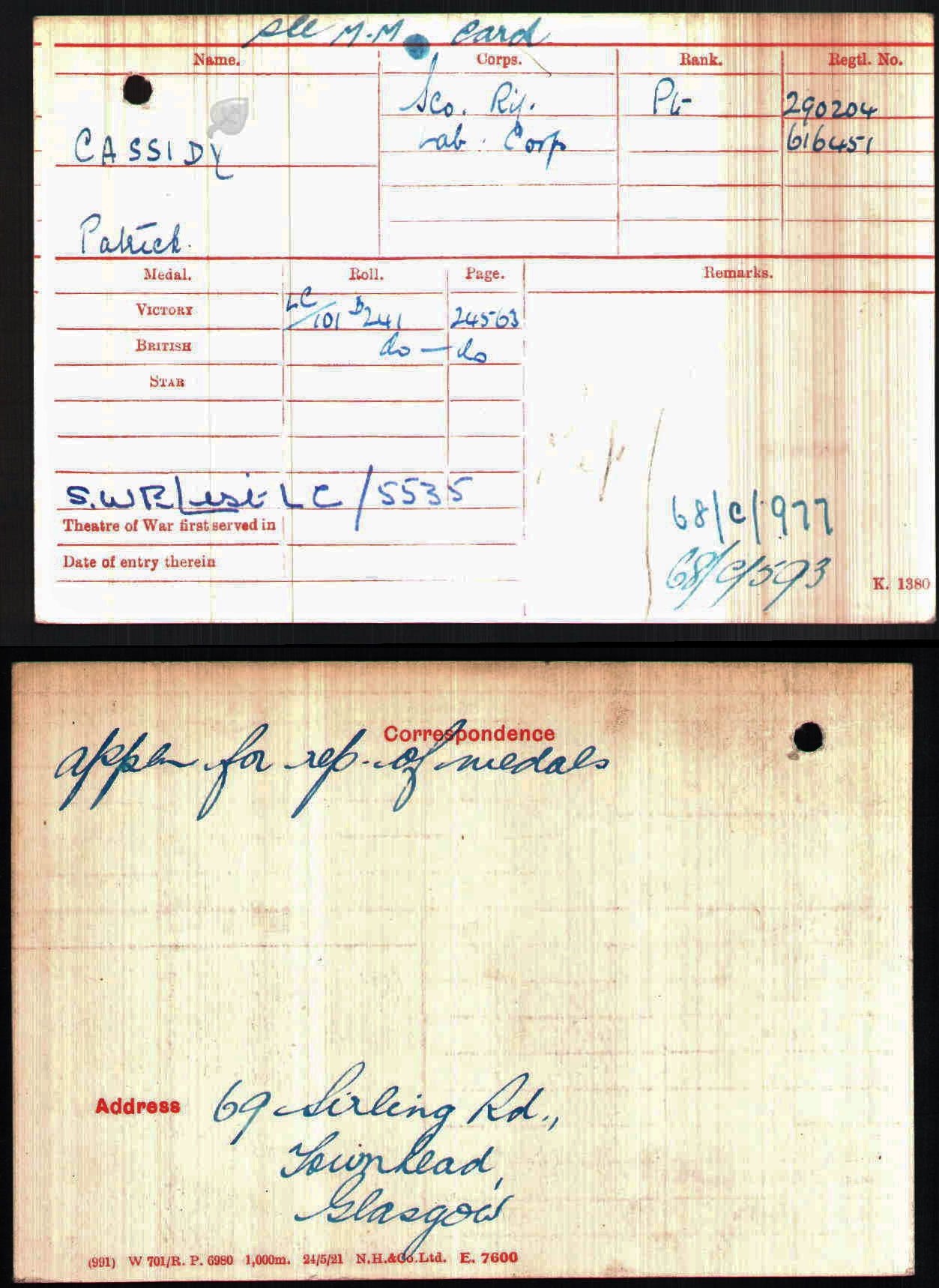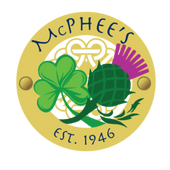Searching for your World War 1 (WW1) Ancestors
At McPhee’s one of our areas of research expertise is military genealogy and finding out more about the lives and times of your military ancestors.
In this tip sheet we explore how you can find out more about your Word War One military ancestors (particularly if they served in the British Army) and learn more about the main record sets that are available.
The First World War was one of the defining events of the 20th century. Many of us have ancestors that served in the British and Commonwealth forces between 1914 and 1918. The archival footprint they left behind provides a rich source of information about their lives and actions during the period 1914 to 1918.
Although military record keeping was almost at its zenith during this period, the tragic loss of about 60% of soldiers service records in the Arnside Street fire in the London Blitz of September 1940 means that there are huge gaps in the record set and we need to find other ways to piece together their war history. Your chance of finding the records of an ancestor who was an Officer is higher than non-officers as supplementary files containing abbreviated information was kept elsewhere meaning you have an 85% chance of a successful search.
Royal Navy.
For your Royal Navy ancestors the record survival rate is high and you should find facts such as:
- Date of enlistment,
- Service number,
- Personal descriptions,
- Ships on which they served (with dates),
- Rank and duration,
- Details of pensions and medal entitlement.
Royal Air Force/Royal Flying Corps
Some 340,000 service records from WW1 survive for your RAF/RFC ancestor, and 101,000 records for Officers survive. Generally, they contain less information than the Army or Navy equivalent, but the survival rate is reasonably high.
Commonwealth
For New Zealand, Australia and Canada the survival rate for records is very high and often quite comprehensive. Canadian records, for example will often have documents such as the Dental Certificate for Demobilization which provides a record of your ancestors dental health.
Where to start and what is available
The key piece of information in finding your WW1 ancestor is their service number which is the unique identifier for all soldiers. Sometimes you will find your ancestor had multiple service numbers if they transferred between regiments. If you are fortunate enough to have a relative who has the physical medals your ancestor was awarded you will find their Rank, Name Service Number and Regiment on the rim of the medal.

If you don’t have the service number you need to follow a more painstaking research approach, going from their name to confirming the Regiment to then identifying their service number and finally trying to determine which Battalion they served in. In some rare cases you may even be able to find out which Company in the Battalion they were in, and if they were wounded the Hospital Admission and Discharge Register records the Company, Squadron or Battery they served in. This can be a priceless piece of information, especially when you read through the Battalion War Diary. This can be a time consuming task as it is based on a process of elimination until you are confident that you are sure that you have identified the right “J Smith” from the potentially hundreds listed in the Medal Roll Index.
There are a large number of records available that give insights about your WW1 Ancestor, but let’s start with the main ones, particularly if your ancestor survived the war.
They are:
The Soldiers Service Record
- Medal Index Card
- Medal Roll
- Battalion War Diary
- Statutory Records (Birth, Death and Marriage)
Soldiers Service records.
The most comprehensive record that is available is the surviving Soldiers Service Records. These are nearly all digitized and indexed and include the individual units they served in, personal details, (including the name and age on enlistment), physical description, next of kin, and whether they were wounded or injured in some way. To be able to locate one of the records for an ancestor can be a gold mine but unfortunately for most of us, our ancestor’s records were destroyed in the Blitz. The surviving records comprise two sets of documents, what have now become known as the “burnt records” (which were salvaged from Arnside Street, but are significantly water damaged and show evidence of fire damage) and the “unburnt collection” which consists of documents that were held by the Ministry of Pensions. These unburnt records primarily concerned soldiers who were discharged from the army on account of sickness or wounds suffered between 1914 and 1920.

The level of detail in each record set will vary but if you are fortunate enough to be able to locate a surviving record they do provide an incredibly detailed and insightful picture of their life during this period.
This example is from the “burnt collection” and we can see that although it has considerable water damage, we can make out some useful details such as marriage date and place, and the names, dates and place of birth of any children.
Medal Index Cards
For most family historians the Medal Index Card is the primary entry point for research as the vast majority have survived. If your ancestor only served in the United Kingdom they are unlikely to have a Medal Index Card. Although the survival rate of these cards is very high, unfortunately the cards rarely contain enough identifying information to allow you to be sure it’s the right soldier. Occasionally an address or the name of the next of kin will appear in the back. In this example the soldier requested a replacement set of medals, hence the address being recorded. The card itself usually contains the regiments they served in; the date of overseas deployment (generally if they received the 1914 or 1914/15 Star), sometimes where they served, if not France and whether they were a prisoner of war, killed, deserted or discharged early. Gallantry medal awards are often mentioned. Often they only include the initial of the first name and If the name was a common one, you may have to follow several leads before pinning down your particular ancestor.

As with nearly all genealogy research it is best to work from image of the original card rather than just transcript, as the transcript doesn’t include the details on the reverse of the card.
Medal rolls
The medal rolls (which were listed by Regiment rather than by individual) were compiled by Regimental Record Officers from details provided by commanding officers. The record office then issued medals to men no longer serving. Although the Medal Index Card is the primary source of information for you, the Medal Rolls are a useful supplementary source.
There are rolls for the three main medals issued, as well as a separate roll for the War Badge;
- the 1914 star (for regulars and reserve are serving in France between August and November 1914) Amy
- the 1914 to 1915 star awarded to others who served in 1914/ 5
- the British War medal and Victory medal (awarded together). A soldier awarded either of the first automatically receive the last
- A separate roll for The War Badge – sometimes known as the "Discharge Badge", or the "Silver Wound Badge (SWB)"

Medal roles for infantry soldiers show not only the regiments they served in but if you are lucky, the battalion, although movement between regiments and battalions aren’t dated.
Once you have determined which Battalion your ancestor served in ,the next step is to explore the relevant War Diary.
War Diaries
If you can confirm the Regiment and Battalion your ancestor served in, the War Diaries provide an almost day by day account of the activities of the Battalion at the time. However don’t expect to see too many names recorded as unless your ancestor was an Officer, you are unlikely to find their name mentioned at all. Even Gallantry medals are often not recorded.

The Diary was the responsibility of the Commanding Officer of each military Unit from Battalion through to Division. It was written each day by a specific junior officer and usually signed off by the Commanding Officer or their designate.
The level of detail varies enormously Unit to Unit, depending on the style of the author who wrote them. They were often written in difficult conditions which explains the sometimes scant descriptions that are provided.
You will find that sometimes Diary entries are very difficult to read and interpret.
Absent Voter Lists
The December 1918 general election was held when many male voters were serving away from home. Every constituency sent a list of absent voters to the War office which issued paperwork enabling soldiers to vote. Frequently the list gave the unit that the soldiers were serving with. Unfortunately many lists are lost, but if they do exist they can provide another source of information to cross reference and locate your ancestor.
Birth, Death and Marriage records
Although not strictly Military records, if your ancestor was either married or had a child during the war years, generally their occupation details would be recorded with their military details. This is especially true in the case of the Scottish records which have significantly more detail than the corresponding birth and marriage records in England and Wales.
That is why it is always helpful to source the original documents of children who were born during the war years.
We see on this record the name of the father gives the Regiment and Battalion which allows us to further narrow the search and importantly access the appropriate war diary.

In our work for clients we try and find out as much information as we can about your ancestor’s war service and using War Diaries and other sources of information give a sense of where they were and what happened to them in the period. It can however be a painstaking research process and we can sigh in regret at those records that were destroyed in 1940.
Many years ago before records were digitized I had a researcher try and find my Great Grandfather’s service records in the physical archives at Kew. I always recall his disclaimer before he began his research “If I can’t find your ancestors records don’t blame me, blame the Luftwaffe”. I still smile at this today as it is still true!
McPhee’s Genealogy
Our mission is to connect people with their roots and culture in a meaningful way, by wearing a piece of tartan, wearing a Claddagh ring, maintaining your culture through music and dance or, now, through McPhee’s Genealogy service, helping you make connections with your ancestors. We are the only Celtic shop in New Zealand offering a professional genealogy research service.
Contact us to start the conversation about your family history.
